How To Manage Your Car During A Track Day
We have likely had more discussions on how to manage your car at a track day than any other track day discussion. There is a lot that is just not known by the first time or occasional track day participant. Managing these elements will ensure a safer track day, and extend the life of your tires, car.
The items are fairly simple…but do take attention and some work. You need to ensure that your car has been prepped for your first track day (see our other www article), and that you bring the basic tools (see our other www article).
TIRES
This is probably the most mis-understood element. There are two cases here, the participant who drove their car to the track (and intends on driving it home as well), and the one who has trailered their car to / from the event. We will focus most of our discussion on the participant who drives to / from the event, but the other elements of this discussion will apply to the participant who trailers their car as well.
The main topic here is TIRE PRESSURES. What tire pressures should be run, when, and how to manage them. Almost all cars for the North American market have a sticker on the drivers inner door jam that specify what tire pressures are best for that car. Those pressures are for street, freeway driving, and are usually measured or defined for “COLD” tire temperatures. You need to know that, and will need to use it when you are preparing to travel home after the event, or even after the day if you are doing multiple day events. BUT, that pressure is NOT to be used on the track. (We can have a separate discussion on how those pressures on the door jam sticker are determined so that you can understand those as well, but that is a separate discussion). Again, the street pressures are NOT the target pressures, neither cold or hot…ignore them. For MOST DOT approved tires (tires like Michelin SuperSport, Michelin Pilot Sport 4S, Bridgestone S04, Bridgestone RE71R, Nitto NT01, Toyo R888, Toyo R1R, Hankook RS3, Continental ExtremeContact Sport, Pirelli PZero, and more, the target HOT tire pressure is 35 – 36psi. Remember that, record it somewhere, memorize, subscribe to it! However, that does not mean that is where we set the tires for the beginning of your session….that is where we want the tire to end up at the end of the session.
Now, there are several factors that need to be considered to determine the best starting tire pressure. Weather, temperature, humidity, the track being driven, the group you are running with, how long the session will be, and finally, how aggressive you will be during your session. For first time participants, they likely have a different first session experience than all others. They may even have an instructor drive their car for the first two or three laps, then they may come in, switch seats, and go back out.
Tire pressures will grow significantly during a session. The key parameters (friction, slip, weather or ambient temperature, and humidity) will have a dramatic impact on how much your tire pressures change. You also need to be aware of what your tire is mainly filled with (ambient air, or Nitrogen). Even if filled w Nitrogen, and purged of almost all humidity, the tire pressures will grow during a track session, just not as much as a tire mainly filled with air.
So, how much will a tire pressure GROW during a session or for the day? Let’s take a likely scenario, and run through a couple of examples. CASE “A” is a customer with a 2005 BMW E46 M3. Case “B” is a customer with a 2011 Porsche Cayman S. These are both likely or possible first time track cars. The info here will apply to any car, you just need to factor in the already mentioned variables.
CASE A (BMW E46 M3)
– Time of day for first session = 8:15am
– Track = Thunderhill East course
– Weather temperature = 55 degrees F
– Humidity = 30%
– Tires = Michelin SuperSport
– True first time track session / experience
– Organization = Hooked On Driving (HOD)
Session 1 tire pressures
– Before session, set tire pressures to about 32-33 psi
– At the end of the session, after you roll off the track, and park at your spot, immediately check your tire pressures…if we guessed our starting point right, we should end up at about 35-36psi…we’ll call this our HOT pressure.
Session 2 tire pressures
If we guessed right for Session 1, then, we need to drop our tire pressures by about 1 psi BEFORE we go out for our second session. For education purposes, it would be good to document your tire pressure management for the day (Session #, cold / starting pressure, hot / finishing pressures, adjustment made)
If we guessed right for Session 1, and made the adjustment DOWN by 1 psi before the start of session 2, then, at the end of session 2, we should come in at the end of your session, measure HOT tire pressures, and they should be around 35-36psi again. That is where we want to end up at the end of each session. If we did end up at 35 psi at the end of session 2, then we will want to want to drop another 1 psi before the start of session 3. Each session, the temperature of the day is likely rising, your comfort with the track grows, and your speed will likely increase. All of these combine to increase the friction / heat generated in the tire, and as a result, the tire pressures will continue to grow.
Now, don’t pay a lot of attention to the tire as it cools between sessions…other than to educate yourself on what is going on.
So…what happens if the numbers don’t match to the target ending pressures? Then, you make an adjustment…it’s like a simple math equation or “if / then” decision matrix statement.
Let’s say you are comfortable w the track, you came up to speed more quickly in Session 2 than we had estimated, and the temperature of the day also got hotter faster than we had estimated. Then, at the end of session 2, our HOT tire pressures could have been 39 psi instead of the target 35-36psi. If we wanted to be at 35psi HOT at the end of the session, and we were at 39psi, and we were going to drop the tire pressure by 1 psi, then we need to alter our adjustment, and relieve the tire pressure by 5 psi prior to the start of the next session.
Session 3 tire pressures
Assuming that we stay w the facts and variables of our first session, we should have ended Session 2 at 25-36psi, and we would need to adjust down yet again our tire pressures by another 1 psi. If we end up above or below the HOT target pressures at the end of the session, then we would factor that into our adjustment equation.
Session 4 tire pressures
The same will hold true for session 4. At the end of session 3, we need to adjust down again our tire pressures by 1 psi.
Session 5 tire pressures
Normally, for session 5, we will NOT need to make any adjustments, as the tires, the weather, your level of driving, the track, the humidity, do not change, and we won’t need to make any change for the last session of the day, or if you have even more sessions, it is likely you will be fine…..but, measure to verify no matter what.
CASE B (Porsche Cayman S, 987, 2011)
– Time of day for first session = 8:15am
– Track = Thunderhill East course
– Weather temperature = 55 degrees F
– Humidity = 30%
– Tires = Michelin Pilot 4S
– 1st track event of the year, has done over 20 track days before
– Organization = Hooked On Driving (HOD)
– Run Group B (running without an instructor)
The main facts that have changed are the experience of the driver, and the speed of the car.
Session 1 tire pressures
– Before session, set tire pressures to about 29 psi
– At the end of the session, after you roll off the track, and park at your spot, immediately check your tire pressures…if we guessed our starting point right, we should end up at about 35-36psi…we’ll call this our HOT pressure.
Session 2 tire pressures
If we guessed right for Session 1, then, we need to drop our tire pressures by about 2 psi BEFORE we go out for our second session. If we guessed right for Session 1, and made the adjustment DOWN by 2 psi before the start of session 2, then, at the end of session 2, we should come in at the end of your session, measure HOT tire pressures, and they should be around 35-36psi again. That is where we want to end up at the end of each session. If we did end up at 35 psi at the end of session 2, then we will want to want to drop another 1 1/2 psi before the start of session 3. Each session, the temperature of the day is likely rising, your comfort with the track grows, and your speed will likely increase. All of these combine to increase the friction / heat generated in the tire, and as a result, the tire pressures will continue to grow. We are adjusting more in Case B than in Case A mainly due to the speed of the car, and the aggressiveness of the driver.
So…what happens if the numbers don’t match to the target ending pressures? Then, you make an adjustment just like in Case A…it’s like a simple math equation or “if / then” decision matrix statement.
Let’s say you are comfortable w the track, you came up to speed more quickly in Session 2 than we had estimated, and the temperature of the day also got hotter faster than we had estimated. Then, at the end of session 2, our HOT tire pressures could have been 39 psi instead of the target 35-36psi. If we wanted to be at 35psi HOT at the end of the session, and we were at 39psi, and we were going to drop the tire pressure by 1 1/2 psi, then we need to alter our adjustment, and relieve the tire pressure by 5 1/2 psi prior to the start of the next session.
Session 3 tire pressures
Assuming that we stay w the facts and variables of our first session, we should have ended Session 2 at 25-36psi, and we would need to adjust down yet again our tire pressures by another 1 psi. If we end up above or below the HOT target pressures at the end of the session, then we would factor that into our adjustment equation.
Session 4 tire pressures
The same will hold true for session 4. At the end of session 3, we need to adjust down again our tire pressures by just 1/2 psi. Due to the agressiveness of the driver, and the speed of the laps, the tires will have normalized more quickly.
Session 5 tire pressures
Normally, for session 5, we will NOT need to make any adjustments, as the tires, the weather, your level of driving, the track, the humidity, do not change, and we won’t need to make any change for the last session of the day, or if you have even more sessions, it is likely you will be fine…..but, measure to verify no matter what.
Going Home or to the Hotel For the Night (either Case A or Case B)
Look back on what we have done….we started the tire pressures very low at the start of the day, and continued to relieve pressures…if we do the math, the effective COLD pressures could now be in the 23-25psi range…no where near where the door jam recommends. Therefore, we need to INFLATE the tires to get them to near the door jam pressures.
One other KEY point…in all our references for track pressure, we are targeting the SAME tire pressures for all four tires, front and rear (or symmetrical). It is very likely that your car does NOT specify that the front and rear tire pressures be the same for street driving. That is correct….we want our track HOT pressures to be around 35-36psi HOT for all four tires, front and rear, but for street driving, we want our front and rear tire pressures to match those COLD tire pressures the manufacturer has defined and posted on the door jam.
FUEL
Just a couple of points on fuel. This is guidance for a new track user…not a long time, aggressive or time trialer. We would suggest that you never let your fuel load get before 1/4 tank. If it looks like you are going to start the session at 1/4 tank, then we would suggest that you add fuel before your session.
We have seen cases, under “G-loading” in the corners, where street cars can starve when the fuel load is at 1/4 tank or less. Most people will consume about 3-5 gallons a session (assuming a normal 20-25 minute session).
At the same time, we would suggest running your fuel load at about the 3/4 full level. We do not know of any issue of running the tank full, but if your car is older, and the fuel caps not quite as strong, you can get some leakage or fuel bypass.
Check your fuel load right after each session….not right before the start of your session.
WHEELS / Lug Bolts / Center Locks
Two items here….too many users don’t check their wheel lug bolts / wheel nuts / wheel studs / center lock nuts at all. WRONG! You need to check them before every session.
However, we have also seen many, almost everyone, who does follow the above rule, abuse the car or equipment…as most do not understand the basic principal of “torquing” a fastener, whatever type it is.
Let’s say you were going to check your wheel lug bolts before the start of the day and then after every session. You DO NOT go an just put the torque wrench on the lug bolt, and test it. WRONG, WRONG, WRONG…if you do that, in a couple of track days, you will SHEAR the lug bolts, and induce a severe safety issue. You also do NOT want to test the torque right after your car has come off the track….the wheels, brakes, etc are very hot, and you can over torque a fastener when it is hot. Wait till the car and systems have cooled, or right before the start of your next session. To check the wheel lug torque (and first, you must know what the proper wheel lug bolt, wheel nut /stud, or center lock nut torque value is), you first LOOSEN the wheel fastener slightly, and then proceed to torque the fastener to the proper value.
If you have a car with any version of “center lock” wheels…check with your manufacturer, and get their procedure for how this is to be performed (when Porsche came out w their center lock hubs / wheels / nuts on the 997.2 911 GT3 or GT3RS, they wrote a 5 page article on how to torque the center locks…and we have watched almost ALL Porsche owners not follow the proper procedure….and we have seen where a wheel hub on multiple Porsche GT3’s / GT3RS’s has been sheared off during a track session…not what you want to happen to your car). Be aware of the proper tools needed to do this, and the torque values.
Realize wheel STUDS / nuts have different torque values than lug bolts when installed on the same car. The defined torque is determined by the metal type, strength, and size.
Yourself
The simple rule here is do not ignore the driver…keep yourself hydrated, visit the bathroom often, wear the proper clothes, and bring sunscreen.
Hope these thoughts have helped prepare you for your events, whether you are a first time participant or an aged track junkie. It should be fun, safe, and exhilarating.
Let us know if you have any questions about any of our info or articles.
BRracing – expertise at your finger tips

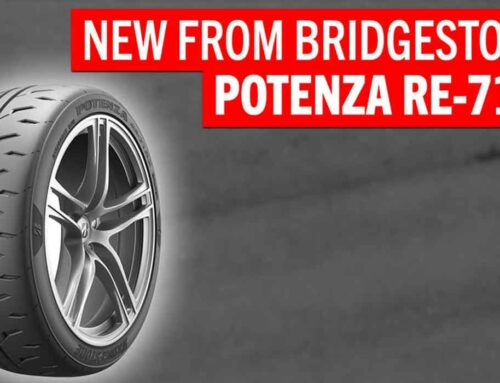
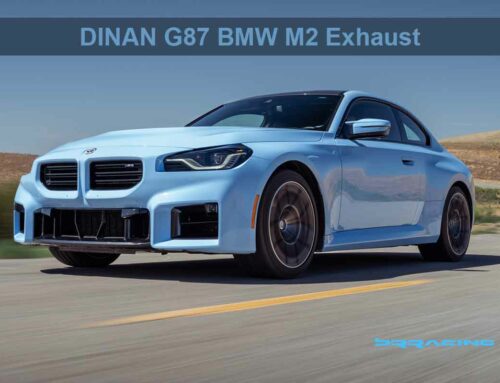
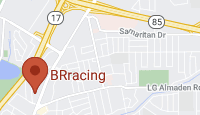
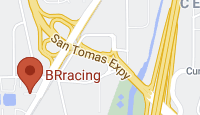
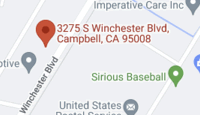
Leave A Comment
You must be logged in to post a comment.